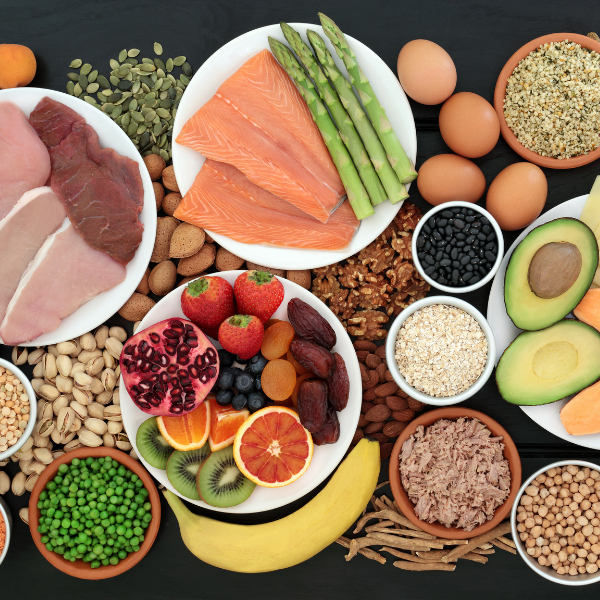Every chef dreams of owning a restaurant, but investing in a brick-and-mortar establishment can cost a fortune. There’s also the fact that so many end up going out of business. This is why aspiring restaurateurs are now hitching a ride on the mobile food business bandwagon. Serving food from the comfort of your own vehicle has proven to be an affordable and accessible way to become a culinary business owner. The question now is, which vehicle will you choose to get started on the road to financial independence? To help you choose amongst the two most popular mobile food vehicles, below we have listed the differences between food trucks and food carts
Table Of Contents
Food Trucks
One of the most recognizable mobile restaurants, a food truck is a large vehicle with a kitchen on the inside. Staff prepares food in the kitchen and serves customers through a side window. With this type of restaurant, operators get the chance to travel to different locations and attract passersby with a variety of food items.
Most meals available are eaten on the go, such as tacos or sandwiches. Customers tend to favor them because they get to enjoy fresh food at public sites. Food trucks are also thought to be cleaner and sometimes more eco-friendly than most mobile restaurants. Some set up dining areas with tables and seats or have a counter attached to the truck for customers to eat meals.
Pros:
Mobility: The biggest pro food trucks offer is their ability to easily move to different locations. Unlike food stands, you don’t have to haul equipment with another vehicle. You simply get in the driver’s seat and hit the festivals, parks, and city streets.
Spaciousness: They have enough space for plenty of equipment so you can offer customers more food items. Plus, there’s space for multiple employees to provide quicker service.
Free ad space: You can promote your business on the exterior of the truck and grab the attention of onlookers.
Easy to clean: There is less kitchen equipment to clean compared to a brick-and-mortar restaurant kitchen.
Trendy And Adaptable: They are the most popular type of mobile restaurant and can be adapted for different types of environments.
Cons:
Cumbersome: It might be hard to find a place to park and difficult to drive through narrow city streets due to their bulky size.
Breakdowns: If you run into car troubles, your business can’t continue until the vehicle is repaired. Plus, it is challenging and expensive to find replacement parts.
Paperwork: They typically require many types of permits before conducting business.

How Much Does It Cost To Invest In A Food Truck?
The price of a food truck ranges from $15,000 to over $250,000. While new trucks come with warranties and customization options, used ones can be more budget-friendly but might need costly repairs. Consider these additional costs:
Kitchen Equipment: Necessary for food preparation.
Upgrades: For better efficiency and compliance.
Fuel: Ongoing expense for operations.
Tires: Regular maintenance requirement.

Kitchen Equipment Needed For Food Trucks
Choosing the right equipment depends on power sources, space, and menu. Here's what you need to know:
Power Options
Electric: Requires more power, potentially needing two generators, but maintains constant temperatures.
Gas: Cheaper and powerful but needs careful handling.
Space Considerations: Measure the interior of your truck to determine the size of appliances.
Specific Equipment For Your Menu: Research appliances based on your offerings, such as a prep table for tacos.
Essentials
Why Do Food Trucks Fail?
Despite their popularity, many food trucks face challenges that lead to failure:
Lack Of Presence: Establish a presence on social media to attract customers.
No Unique Product: Offer unique and creative dishes to stand out.
Underestimating Work: Success involves more than cooking and serving; research your audience, find optimal locations and hours, stay updated on events, and actively promote your business.

Food Carts
Food carts are small kitchen carts with wheels that are pushed by hand or bike, they can also be towed by a vehicle. With hand or bike-powered carts, the distance you travel is as far as you are able to take it. Operators with these types of carts have a limited radius of operation, while towed food carts can travel a much farther distance. You will typically see food carts during lunch rushes in parks, busy sidewalks, and public events.
Food carts are not full-sized kitchens. Because of this, they are limited to serving one or two meals and a few prepackaged snacks or drinks. Depending on what is being served, they are equipped with one or two heating elements such as steamers, boilers, deep fryers, and warmers.
Pros:
Portability: Their small size is perfect for navigating through crowds and city streets. You can reach more places food trucks can’t go such as the inside of malls. You can go practically anywhere and easily move to another location with the right permit.
Less Management: They only require one person for operation. You don’t have to worry about training employees or payroll.
Affordable: The least expensive option for getting into the mobile restaurant business.
Build Customer Relationships: Being eye-level with customers makes it easy to create connections and provide friendly service.
Cons:
Physically Taxing: They have a smaller range of operations compared to food trucks and only go as far as you can physically take them, which can be tiring.
Limited Menu: There’s only enough space for one or two small appliances. This limits your menu and ability to be creative with food items. The smaller space also means you can run out of inventory faster.
No Ad Space: They are more difficult to brand which means you might need to carry signs to get recognized by customers.
Notorious Reputation: Many people avoid food carts because they have a reputation for not being clean.
How Much Does It Cost To Invest In A Food Cart?
Food carts cost from $1,000 to $20,000, depending on the type of cart. The most basic food carts are the cheapest, and the most expensive are bigger and outfitted with more features. The relatively low price means you’ll get a return on your investment and begin earning income quicker than any other type of restaurant business.
Kitchen Equipment Needed For Food Carts
Most food carts have preinstalled equipment for cooking a specific type of food. For example, a hot dog cart will have a propane regulator, water system, and flame adjusters. On the other hand, a coffee cart has none of those things and can simply be equipped with a tap system. If you plan on selling something more unique, you probably have to find a vendor that sells customized food carts. You can work with them to see what type of equipment your menu calls for and if it can be integrated into the cart.
Why Do Food Carts Fail?
Lots of food trucks go out of business because they fail to find good locations and lack consistency. Oftentimes, operators are not doing enough research to find locations with a good amount of foot traffic. However, finding a good location is only half the work. Operators must succeed in consistently showing up at that location. If customers fail to find you at an expected time and you are not there, they buy their lunch from somewhere else.

How Do I Decide Between A Food Truck And A Food Cart?
Deciding between a food truck and a food cart depends on your mobility needs, space requirements, and desired menu variety. Food trucks offer more space and versatility, making them suitable for diverse menus and frequent travel to different locations. In contrast, food carts are compact and easier to maneuver in tight spaces, ideal for locations with high foot traffic or limited access. Consider these factors based on your business goals and operational preferences to make the best choice for your mobile food venture.
What Permits And Licenses Are Required To Operate A Food Truck Or Food Cart?
Operating a food truck or food cart requires several permits and licenses to ensure compliance with health and safety regulations. Both types of businesses typically need health permits to certify food safety standards, along with business licenses for legal operation. Depending on your location, you may also need specific permits for vending in public spaces or at events. It's essential to research and obtain all necessary permits before launching your business to avoid legal issues and maintain smooth operations.
How Can I Maintain Cleanliness And Hygiene Standards In A Food Truck Or Food Cart?
Maintaining cleanliness and hygiene is critical for food truck and food cart operators to ensure food safety and customer satisfaction. Establishing a regular cleaning schedule for cooking surfaces, utensils, and storage areas helps prevent contamination and maintain cleanliness standards. Adherence to health regulations, including proper handwashing and food storage practices, is essential. By implementing thorough cleaning protocols and staff training in food safety practices, operators can uphold hygiene standards and build trust with customers.
What Are The Typical Operational Challenges Faced By Food Truck And Food Cart Operators?
Food truck and food cart operators face various operational challenges, including finding optimal locations with high customer traffic, managing inventory effectively to meet demand without excess, and staying compliant with regulatory requirements. Vehicle maintenance, staffing, and navigating operational costs such as fuel and insurance also present ongoing challenges. Successful operators anticipate these challenges, plan strategically, and adapt their operations to maximize efficiency and profitability in the competitive mobile food industry.
Making Your Choice: Food Truck Or Food Cart
Choosing between a food truck and a food cart depends on your budget, mobility needs, and menu aspirations. Whether you're starting small with a food cart or aiming for versatility with a food truck, ensure you have the right equipment and knowledge to succeed. Explore our catalog for supplies tailored to food trucks and food carts to kickstart your mobile culinary venture!












